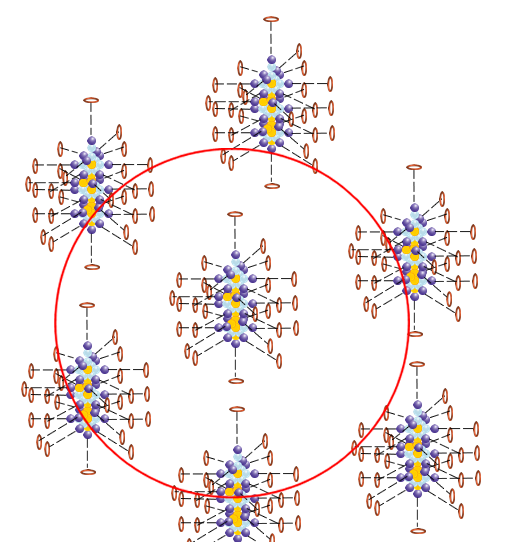
Spin Physics is the part of Physics that is focused on SPIN.
Elementary particles have intrinsic properties. Some of these properties are the same properties we associate with macroscopic objects, such as mass and charge. Some are purely quantum-mechanical and have no macroscopic analog.
Spin is intrinsic angular momentum associated with elementary particles. It is a purely quantum mechanical phenomenon without any analog in classical physics. Spin is not associated with any rotating internal parts of elementary particles; it is intrinsic to the particle itself. An electron has spin, even though it is believed to be a point particle, possessing no internal structure. The concept of spin was introduced in 1925 by Ralph Kronig, and independently by George Uhlenbeck and Samuel Goudsmit.
Spin is quantized, and can only take on discrete values. The spin angular momentum of an electron, measured along any particular direction, can only take on the values ħ/2 or -ħ/2.
Magnonics is an emerging field of modern magnetism, which can be considered a sub-field of modern solid-state physics. Magnonics combines the study of waves and magnetism. Its main aim is to investigate the behavior of spin waves in nano-structure elements. In essence, spin waves are a propagating re-ordering of the magnetization in a material and arise from the precession of magnetic moments. Magnetic moments arise from the orbital and spin moments of the electron, most often it is this spin moment that contributes to the net magnetic moment.
Following the success of the modern hard disk, there is much current interest in future magnetic data storage and using spin waves for things such as ‘magnonic’ logic and data storage. Similarly, spintronics looks to utilize the inherent spin degree of freedom to complement the already successful charge property of the electron used in contemporary electronics. Modern magnetism is concerned with furthering the understanding of the behaviour of the magnetization on very small (sub-micrometer) length scales and very fast (sub-nanosecond) timescales and how this can be applied to improving existing or generating new technologies and computing concepts. A magnon torque device was invented and later perfected at the National University of Singapore’s Electrical & Computer Engineering department, which is based on such potential uses, with results published on November 29, 2019, in Science.
A magnonic crystal is a magnetic metamaterial with alternating magnetic properties. Like conventional metamaterials, their properties arise from geometrical structuring, rather than their bandstructure or composition directly. Small spatial inhomogeneities create an effective macroscopic behavior, leading to properties not readily found in nature. By alternating parameters such as relative permeability or saturation magnetization, there exists the possibility to tailor ‘magnonic’ bandgaps in the material. By tuning the size of this bandgap, only spin wave modes able to cross the bandgap would be able to propagate through the media, leading to selective propagation of certain spin wave frequencies.
Contact us
Would you like to speak to one of our scientist? Just submit your contact details and we’ll be in touch shortly. You can also email us if you prefer that type of communication.
